
Each of the brain’s 100 billion neurons has somewhere in the realm of 7,000 connections to other neurons, creating a tangled roadmap of about 700 trillion possible turns. But thinking of the brain as roads makes it sound very fixed—you know, pavement, and rebar, and steel girders and all. But the opposite is true: at work in our brains are never-sleeping teams of Fraggles and Doozers who rip apart the roads, build new ones, and are constantly at work retooling the brain’s intersections. This study of Fraggles and Doozers is the booming field of neuroplasticity: how the basic architecture of the brain changes over time. Scientist, neuro math geek, Science Channel personality and accomplished author Garth Sundem writes for ScriptPhD.com about the phenomenon of brain training and memory.
Certainly the brain is plastic—the gray matter you wake up with is not the stuff you take to sleep at night. But what changes the brain? How do the Fraggles know what to rip apart and how do the Doozers know what to build? Part of the answer lies in a simple idea: neurons that fire together, wire together. This is an integral part of the process we call learning. When you have a thought or perform a task, a car leaves point A in your brain and travels to point B. The first time you do something, the route from point A to B might be circuitous and the car might take wrong turns, but the more the car travels this same route, the more efficient the pathway becomes. Your brain learns to more efficiently pass this information through its neural net.
A simple example of this “firing together is wiring together” is seen in the infant hippocampus. The hippocampus packages memories for storage deeper in the brain: an experience goes in and a bundle comes out. I think of it like the pegboard at the Seattle Science Center: you drop a bouncy ball in the top and it ricochets down through the matrix of pegs until exiting a slot at the bottom. In the hippocampus, it’s a defined path: you drop an experience in slot number 5,678,284 and
it comes out exit number 1,274,986. How does the hippocampus possibly know which entrance leads to which exit? It wires itself by trial and error (oversimplification alert…but you get the point). Infants constantly fire test balls through the matrix and ones that reach a worthwhile endpoint reinforce worthwhile pathways. These neurons fire together, wire together, and eventually the hippocampus becomes efficient. It’s just that easy. (And because it’s so easy, researchers aren’t far away from creating an artificial hippocampus.)

Now let’s think about Sudoku. The first time you discover which missing numbers go in which empty boxes, you do so inefficiently. But over time, you get better at it. You learn tricks. You start to see patterns. You develop a workflow. And practice creates efficiency in your brain as neurons create the connections necessary for the quick processing of Sudoku. This is true of any puzzle: your plastic brain changes its basic architecture to allow you to complete subsequent puzzles more efficiently. Okay, that’s great and all, but studies are finding that the vast majority of brain-training attempts don’t generalize to overall intelligence. In other words, by doing Sudoku, you only get better at Sudoku. This might gain you street cred in certain circles, but it doesn’t necessarily make you smarter. Unfortunately, the same is true of puzzle regiments: you get better at the puzzles, but you don’t necessarily get smarter in a general way.
That said, one type of puzzle offers some hope: the crossword. In fact, researchers at Wake Forest University suggest that crossword puzzles strengthen the brain (even in later years) the same way that lifting weights can increase muscle strength. Still, it remains true that doing the crossword only reinforces the mechanism needed to do the crossword. But the crossword uses a very specific mechanism: it forces you to pull a range of facts from deep within your brain into your working memory. This is a nice thing to get better at. Think about it: there are few tasks that don’t require some sort of recall, be it of facts or experiences. And so training a nimble working memory through crosswords seems a more promising regiment than other single type of brain training exercise.
This is borne out by research. A Columbia University study published in 2008 found that training working memory increased overall fluid intelligence. So the answer to this article’s title question is yes, brain training is very real. (Only, there’s lot of schlock out there.) But hidden in this article lies the new key that many researchers hope will point the way to brain training of the future. Any ONE brain training regiment only makes you better at the one thing being trained. But NEW EXPERIENCES in general, promise a varied and continual rewiring of the brain for a fluid and ever-changing development of intelligence. In other words, if you stay in your comfort zone, the comfort zone decays around you. In order to build intelligence or even to keep what you have, you need to be building new rooms, outside your comfort zone. If you consume a new media source in the morning, experiment with a new route to work, eat a new food for lunch, talk to a new person, or…try a NEW puzzle, you’re forcing your brain to rewire itself to be able to deal with these new experiences—you’re growing new neurons and forcing your old ones to scramble to create new connections.
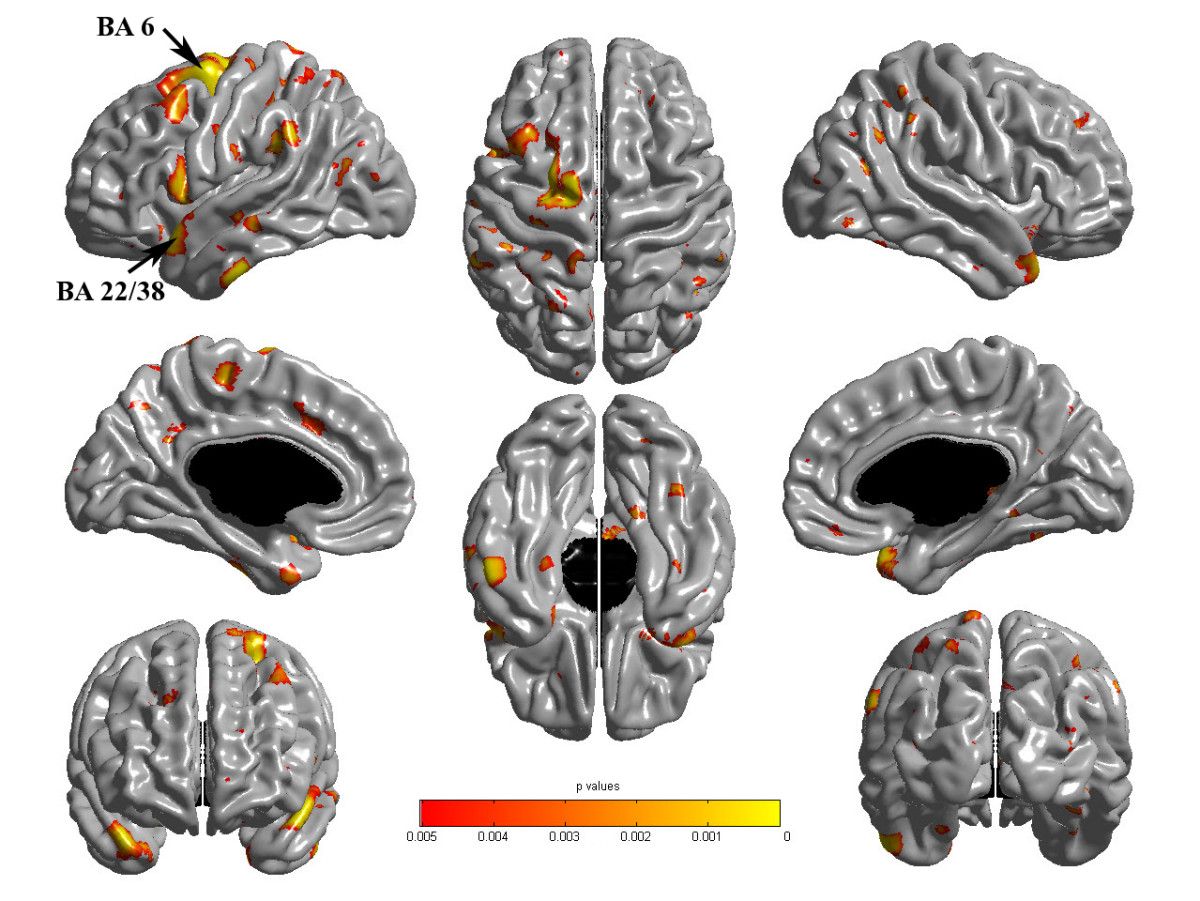
Here’s what that means for your brain-training regimen: doing a puzzle is little more than busywork; it’s the act of figuring out how to do it that makes you smarter. Sit down and read the directions. If you understand them immediately and know how you should go about solving a puzzle, put it down and look for something else…something new. It’s not just use it or lose it. It’s use it in a novel way or lose it. Try it. Your brain will thank you for it.
Garth Sundem works at the intersection of math, science, and humor with a growing list of bestselling books including the recently released Brain Candy: Science, Puzzles, Paradoxes, Logic and Illogic to Nourish Your Neurons, which he packed with tasty tidbits of fun, new experiences in hopes of making readers just a little bit smarter without boring them
into stupidity. He is a frequent on-screen contributor to The Science Channel and has written for magazines including Wired, Seed, Sand Esquire. You can visit him online or follow his Twitter feed.
*****************
ScriptPhD.com covers science and technology in entertainment, media and advertising. Hire our consulting company for creative content development.
Subscribe to free email notifications of new posts on our home page.
]]>
Scientists are becoming more interested in trying to pinpoint precisely what’s going on inside our brains while we’re engaged in creative thinking. Which brain chemicals play a role? Which areas of the brain are firing? Is the magic of creativity linked to one specific brain structure? The answers are not entirely clear. But thanks to brain scan technology, some interesting discoveries are emerging. ScriptPhD.com was founded and focused on the creative applications of science and technology in entertainment, media and advertising, fields traditionally defined by “right brain” propensity. It stands to reason, then, that we would be fascinated by the very technology and science that as attempting to deduce and quantify what, exactly, makes for creativity. To help us in this endeavor, we are pleased to welcome computer scientist and writer Ravi Singh’s guest post to ScriptPhD.com. For his complete article, please click “continue reading.”
Before you can measure something, you must be able to clearly define what it is. It’s not easy to find consensus among scientists on the definition of creativity. But then, it’s not easy to find consensus among artists, either, about what’s creative and what’s not. Psychologists have traditionally defined creativity as “the ability to combine novelty and usefulness in a particular social context.” But newer models argue that these type of definitions, which rely on extremely-subjective criteria like ‘novelty’ and ‘usefulness,’ are too vague. John Kounios, a psychologist at Drexel University who studies the neural basis of insight, defines creativity as “the ability to restructure one’s understanding of a situation in a non-obvious way.” His research shows that creativity is not a singular concept. Rather, it’s a collection of different processes that emerge from different areas of the brain.
In attempting to measure creativity, scientists have had a tendency to correlate creativity with intelligence—or at least link creativity to intelligence—probably because we believe that we have a handle on intelligence. We believe can measure it with some degree of accuracy and reliability. But not creativity. No consensus measure for creativity exists. Creativity is too complex to be measured through tidy, discrete questions. There is no standardized test. There is yet to be a meaningful “Creativity Quotient.” In fact, creativity defies standardization. In the creative realm, one could argue, there’s no place for “standards.” After all, doesn’t the very notion of standardization contradict what creativity is all about?
To test creativity, researchers have historically attempted to test divergent thinking, an assessment construct originally developed in the 1950s by psychologist J. P. Guilford, who believed that standardized IQ tests favored convergent thinkers (who stay focused on solving a core problem), rather than divergent thinkers (who go ‘off on tangents’). Guilford believed that scores on IQ tests should not be taken as a unidimensional measure of intelligence. He observed that creative people often score lower on standard IQ tests because their approach to solving the problems generates a larger number of possible solutions, some of which are thoroughly original. The test’s designers would have never thought of those possibilities. Testing divergent thinking, he believed, allowed for greater appreciation of the diversity of human thinking and abilities. A test of divergent thinking might ask the subject to come up with new and useful functions for a familiar object, such as a brick or a pencil. Or the subject might be asked to draw the taste of chocolate. You can see how it would be very difficult, if not impossible to standardize a “correct” answer.
Eastern traditions have their own ideas about creativity and where it comes from. In Japan, where students and factory workers are stereotyped as being too methodical, researchers are studying schoolchildren for a possible correlation between playfulness and creativity. Nath philosopher Mahendranath wrote that man’s “memory became buried under the artificial superstructure of civilization and its artificial concepts,” his way of saying that that too much convergent thinking can inhibit creativity. Sanskrit authors described the spontaneous and divergent mental experience of sahaja meditation, where new insights occur after allowing the mind to rest and return to the natural, unconditioned state. But while modern scientific research on meditation is good at measuring physiological and behavioral changes, the “creative” part is much more elusive.
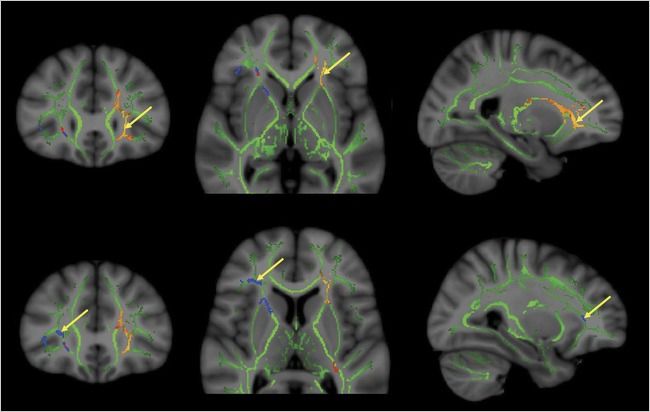
Some western scientists suggest that creativity is mostly ascribed to neurochemistry. High intelligence and skill proficiency have traditionally been associated with fast, efficient firing of neurons. But the research of Dr. Rex Jung, a research professor in the department of neurosurgery at the University of New Mexico, shows that this is not necessarily true. In researching the neurology of the creative process, Jung has found that subjects who tested high in “creativity” had thinner white matter and connecting axons in their brains, which has the effect of slowing nerve traffic. Jung believes that this slowdown in the left frontal cortex, a brain region where emotion and cognition are integrated, may allow us to be more creative, and to connect disparate ideas in novel ways. Jung has found that when it comes to intellectual pursuits, the brain is “an efficient superhighway” that gets you from Point A to Point B quickly. But creativity follows a slower, more meandering path that has lots of little detours, side roads and rabbit trails. Sometimes, it is along those rabbit trails that our most revolutionary ideas emerge.
You just have to be willing to venture off the main highway.
We’ve all had aha! moments—those sudden bursts of insight that solve a vexing problem, solder an important connection, or reinterpret a situation. We know what it is, but often, we’d be hard-pressed to explain where it came from or how it originated. Dr. Kounios, along with Northwestern University psychologist Mark Beeman, has extensively studied the the “Aha! moment.” They presented study participants with simple word puzzles that could be solved either through a quick, methodical analysis or an instant creative insight. Participants are given three words then are asked to come up with one word that could be combined with each of these three to form a familiar term; for example: crab, pine and sauce. (Answer: “apple.”) Or eye, gown and basket. (Answer: ball)
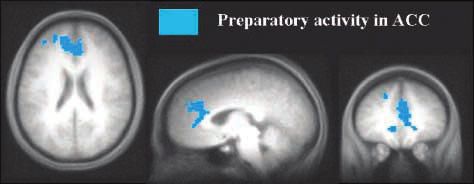
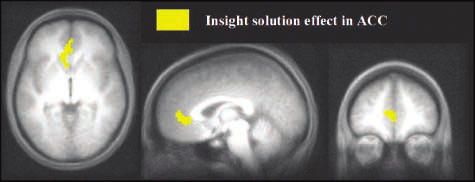
About half the participants arrived at solutions by methodically thinking through possibilities; for the other half, the answer popped into their minds suddenly. During the “Aha! moment,” neuroimaging showed a burst of high-frequency activity in the participants’ right temporal lobe, regardless of whether the answer popped into the subjects’ minds instantly or they solved the problem methodically. But there was a big difference in how each group mentally prepared for the test question. The methodical problem solvers prepared by paying close attention to the screen before the words appeared—their visual cortices were on high alert. By contrast, those who received a sudden Aha! flash of creative insight prepared by automatically shutting down activity in the visual cortex for an instant—the neurological equivalent of closing their eyes to block out distractions so that they could concentrate better. These creative thinkers, Kounios said, were “cutting out other sensory input and boosting the signal-to-noise ratio” to enable themselves retrieve the answer from the subconscious.
Creativity, in the end, is about letting the mind roam freely, giving it permission to ignore conventional solutions and explore uncharted waters. Accomplishing that requires an ability, and willingness, to inhibit habitual responses, take risks. Dr. Kenneth M. Heilman, a neurologist at the University of Florida believes that this capacity to let go may involve a dampening of norepinephrine, a neurotransmitter that triggers the fight-or-flight alarm. Since norepinephrine also plays a role in long-term memory retrieval, its reduction during creative thought may help the brain temporarily suppress what it already knows, which paves the way for new ideas and discovering novel connections. This neurochemical mechanism may explain why creative ideas and Aha! moments often occur when we are at our most peaceful, for example, relaxing or meditating.
The creative mind, by definition, is always open to new possibilities, and often fashions new ideas from seemingly irrelevant information. Psychologists at the University of Toronto and Harvard University believe they have discovered a biological basis for this behavior. They found that the brains of creative people may be more receptive to incoming stimuli from the environment that the brains of others would shut out through the the process of “latent inhibition,” our unconscious capacity to ignore stimuli that experience tells us are irrelevant to our needs. In other words, creative people are more likely to have low levels of latent inhibition. The average person becomes aware of such stimuli, classifies it and forgets about it. But the creative person maintains connections to that extra data that’s constantly streaming in from the environment and uses it.
Sometimes, just one tiny stand of information is all it takes to trigger a life-changing “Aha!” moment.
Ravi Singh is a California-based IT professional with a Masters in Computer Science (MCS) from the University of Illinois. He works on corporate information systems and is pursuing a career in writing.
*****************
ScriptPhD.com covers science and technology in entertainment, media and advertising. Hire our consulting company for creative content development.
Subscribe to free email notifications of new posts on our home page.
]]>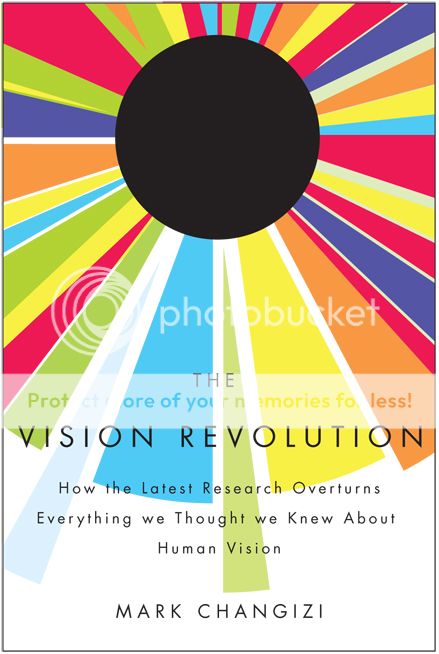
Dr. Mark Changizi, a cognitive science researcher, and professor at Rensselaer Polytechnic Institute, is one of the most exciting rising stars of science writing and the neurobiology of popular culture phenomena. His latest book, The Vision Revolution, expounds on the evolution and nuances of the human eye—a meticulously designed, highly precise technological marvel that allows us to have superhuman powers. You heard me right; superhuman! X-ray vision, color telepathy, spirit reading, and even seeing into the future. Dr. Changizi spoke about these ideas, and how they might be applied to everything from sports stars with great hand-eye coordination to modern reading and typeface design with us in ScriptPhD.com’s inaugural audio podcast. He also provides an exclusive teaser for his next book with a guest post on the surprising mindset that makes for creative people. Read Dr. Changizi’s guest post and listen to the podcast under the “continue reading” cut.
You are an idea-monger. Science, art, technology—it doesn’t matter which. What matters is that you’re all about the idea. You live for it. You’re the one who wakes your spouse at 3am to describe your new inspiration. You’re the person who suddenly veers the car to the shoulder to scribble some thoughts on the back of an unpaid parking ticket. You’re the one who, during your wedding speech, interrupts yourself to say, “Hey, I just thought of something neat.” You’re not merely interested in science, art or technology, you want to be part of the story of these broad communities. You don’t just want to read the book, you want to be in the book—not for the sake of celebrity, but for the sake of getting your idea out there. You enjoy these creative disciplines in the way pigs enjoy mud: so up close and personal that you are dripping with it, having become part of the mud itself.
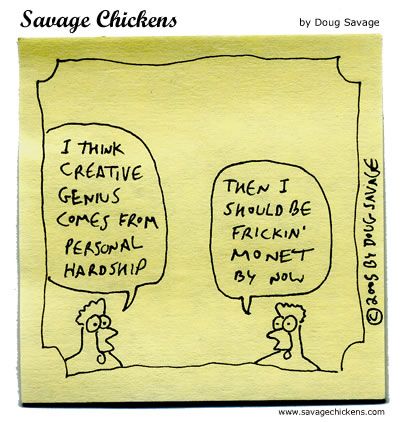
Enthusiasm for ideas is what makes an idea-monger, but enthusiasm is not enough for success. What is the secret behind people who are proficient idea-mongers? What is behind the people who have a knack for putting forward ideas that become part of the story of science, art and technology? Here’s the answer many will give: genius. There are a select few who are born with a gift for generating brilliant ideas beyond the ken of the rest of us. The idea-monger might well check to see that he or she has the “genius” gene, and if not, set off to go monger something else.
Luckily, there’s more to having a successful creative life than hoping for the right DNA. In fact, DNA has nothing to do with it. “Genius” is a fiction. It is a throw-back to antiquity, where scientists of the day had the bad habit of “explaining” some phenomenon by labeling it as having some special essence. The idea of “the genius” is imbued with a special, almost magical quality. Great ideas just pop into the heads of geniuses in sudden eureka moments; geniuses make leaps that are unfathomable to us, and sometimes even to them; geniuses are qualitatively different; geniuses are special. While most people labeled as a genius are probably somewhat smart, most smart people don’t get labeled as geniuses.
I believe that it is because there are no geniuses, not, at least, in the qualitatively-special sense. Instead, what makes some people better at idea-mongering is their style, their philosophy, their manner of hunting ideas. Whereas good hunters of big game are simply called good hunters, good hunters of big ideas are called geniuses, but they only deserve the moniker “good idea-hunter.” If genius is not a prerequisite for good idea-hunting, then perhaps we can take courses in idea-hunting. And there would appear to be lots of skilled idea-hunters from whom we may learn.
There are, however, fewer skilled idea-hunters than there might at first seem. One must distinguish between the successful hunter, and the proficient hunter – between the one-time fisherman who accidentally bags a 200 lb fish, and the experienced fisherman who regularly comes home with a big one (even if not 200 lbs). Communities can be creative even when no individual member is a skilled idea-hunter. This is because communities are dynamic evolving environments, and with enough individuals, there will always be people who do generate fantastically successful ideas. There will always be successful idea-hunters within creative communities, even if these individuals are not skilled idea-hunters, i.e., even if they are unlikely to ever achieve the same caliber of idea again. One wants to learn to fish from the fisherman who repeatedly comes home with a big one; these multiple successful hunts are evidence that the fisherman is a skilled fish-hunter, not just a lucky tourist with a record catch.
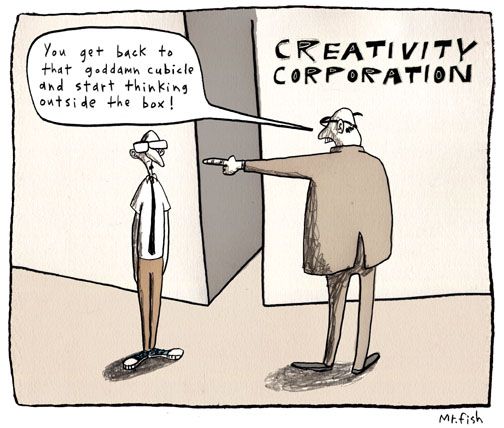
And what is the key behind proficient idea-hunters? In a word: aloofness. Being aloof—from people, from money, from tools, and from oneself—endows one’s brain with amplified creativity. Being aloof turns an obsessive, conservative, social, scheming status-seeking brain into a bubbly, dynamic brain that resembles in many respects a creative community of individuals. Being a successful idea-hunter requires understanding the field (whether science, art or technology), but acquiring the skill of idea-hunting itself requires taking active measures to “break out” from the ape brains evolution gave us, by being aloof.
I’ll have more to say about this concept over the next year, as I have begun writing my fourth book, tentatively titled Aloof: How Not Giving a Damn Maximizes Your Creativity. (See here and here for other pieces of mine on this general topic.) In the meantime, given the wealth of creative ScriptPhD.com readers and contributors, I would be grateful for your ideas in the comment section about what makes a skilled idea-hunter. If a student asked you how to be creative, how would you respond?
Mark Changizi is an Assistant Professor of Cognitive Science at Rensselaer Polytechnic Institute in New York and the author of The Vision Revolution and The Brain From 25,000 Feet. More of Dr. Changizi’s writing can be found on his blog, Facebook Fan Page, and Twitter.
ScriptPhD.com was privileged to sit down with Dr. Changizi for a half-hour interview about the concepts behind his current book, The Vision Revolution, out in paperback June 10, the magic that is human ocular perception, and their applications in our modern world. Listen to the podcast below:
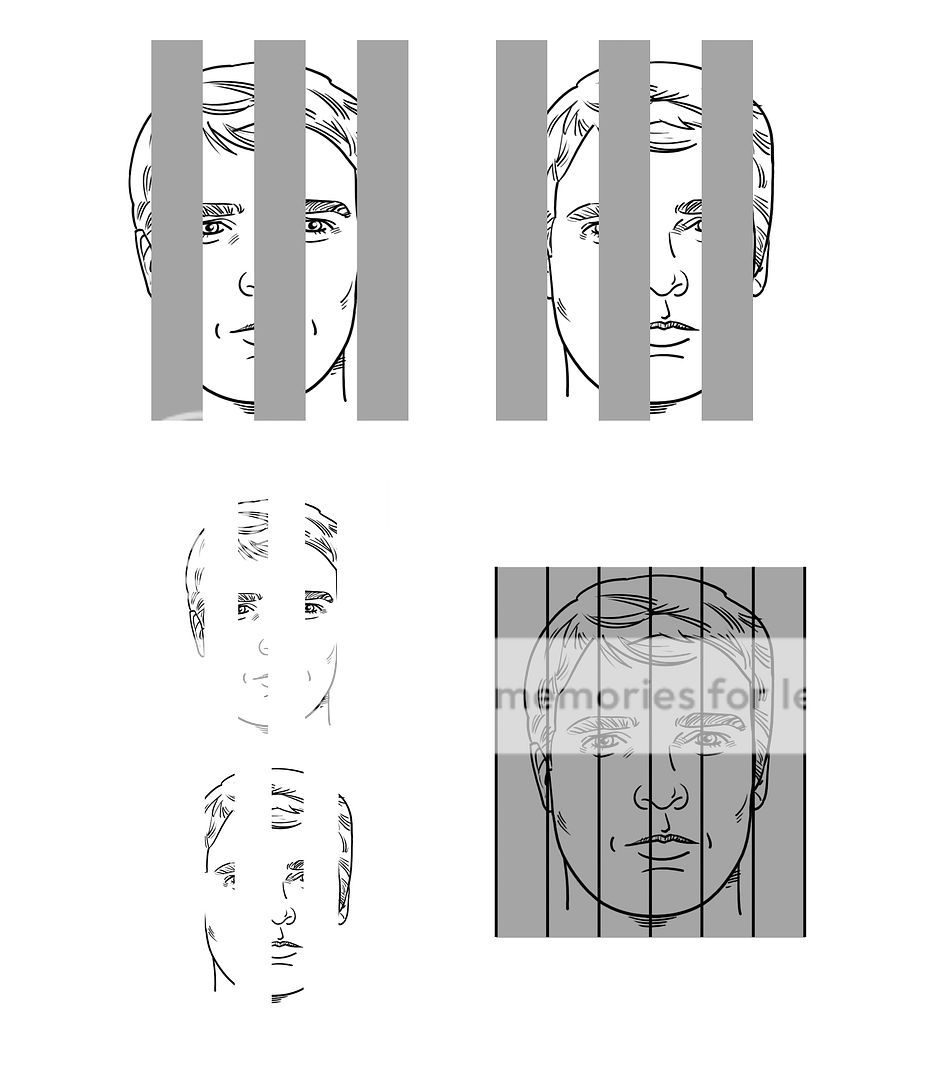
~*ScriptPhD*~
*****************
ScriptPhD.com covers science and technology
in entertainment, media and advertising. Hire our consulting company for creative content development.
Follow us on Twitter and our Facebook fan page. Subscribe to free email notifications of new posts on our home page.
]]>
You spot someone across a crowded room. There is eye contact. Your heart beats a little faster, palms are sweaty, you’re light-headed, and your suddenly-squeamish stomach has dropped to your knees. You’re either suffering from an onset of food poisoning or you’re in love. But what does that mean, scientifically, to fall in love, to be in love, to stay in love? In our special Valentine’s Day post, Editor Jovana Grbić expounds on the neuronal and biophysical markers of love, how psychologists and mathematicians have harnessed (and sometimes manipulated) this information to foster 21st Century digital-style romance, and concludes with a personal reflection on what love really means in the face of all of this science. You might just be surprised. So, Cupid, draw back your sword… and click “continue reading” for more!
What is This Thing Called Love?
Scientists are naturally attracted to romance. Why do we love? Falling in love can be many things emotionally, ranging from the exhilarating to the truly frightening. It is, however, also remarkably methodical, with three stages developed by legendary biological anthropologist Helen Fisher of Rutgers University—lust, attraction and attachment—each with its own distinct neurochemistry. During lust, in both men and women, two basic sex hormones, testosterone and estrogen, primarily drive behavior and psychology. Interestingly enough, although lust has been memorialized by artists aplenty, this stage of love is remarkably analytical. Psychologists have shown that those individuals primed with thoughts of lust had the highest levels of analytical thinking, while those primed with thoughts of love had the highest levels of creativity and insight. But we’ll get to love in a minute.

During attraction, a crucial trio of neurotransmitters, adrenaline, dopamine and serotonin, literally change our brain chemistry, leading to the phase of being obsessed and love-struck. Remember how we talked about a racing heart and sweaty palms upon seeing someone you’re smitten with? That would be a rush of adrenaline (also referred to as epinephrine), the “fight or flight” hormone/neurotransmitter, responsible for increased heart rate, contraction of blood vessels, and dilation of air passages. Dopamine is an evolutionarily-conserved, ubiquitous neurotransmitter the regulates basic functions such as anatomy, movement and cognition—a reason the loss of dopamine in Parkinson’s Disease patients can be so devastating. Dopamine is also responsible for the pleasure and reward mechanisms in the brain, hyperactivated by abuse of drugs such as cocaine and heroin. It has even been linked to creativity and idea generation via interactions of the frontal and temporal lobes and the limbic system. This is, therefore, that link between love and creativity that we mentioned above. Incidentally, the releasing or induction agent of norepinephrine and dopamine is a chemical called phenethylamine (PEA). Did you give your sweetheart chocolates for Valentine’s Day? If so, you did well, because chocolate is loaded with some of the highest naturally-occurring levels of phenethylamine, leading to a “chocolate theory of love.” If you can’t stop thinking about your beloved, it’s because of serotonin, one of love’s most important chemicals. Its neuronal functions include regulation of mood, appetite, sleep, and cognitive functions—all affected by love. Most modern generation antidepressants involve alteration of serotonin levels in the brain.
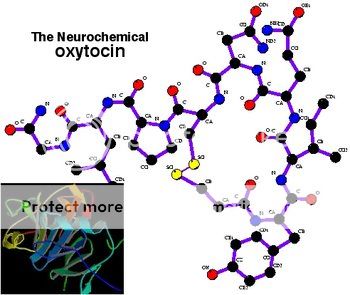
During latent attachment, two important chemicals “seal the deal” for long-term commitment: oxytocin and vasopressin. Oxytocin, often referred to as “the hormone of love,” is a neurotransmitter released during childbirth, breastfeeding and orgasms, and is crucial for species bonding, trust, and unconditional love. A sequence of experiments showed that trust formation in group activities, social interaction, and even psychological betrayal hinged on oxytocin levels. Vasopressin is a hormone responsible for memory formation and aggressive behavior. Recent research also suggests a role for vasopressin in sexual activity and in pair-bond formation. When vasopressin receptor gene was transplanted into mice (natural loners), they exhibited gregarious, social behaviors. That gene, the vasopressin receptor, was isolated in the prarie vole, among the select few of habitually monogamous mammals. When the receptor was introduced into their highly promiscuous Don Juan meadow vole relatives, they reformed their wicked rodent ways, fixated on one partner, guarded her jealously, and helped rear their young.
With all these chemicals floating around in the brain of the aroused and the amorous, it’s not surprising that scientists have deduced that the same brain chemistry responsible for addiction is also responsible for love!
The aforementioned Dr. Fisher gave an exceptional TED Talk in 2006 about her research in romantic love; its evolution, its biochemistry, and its social importance:
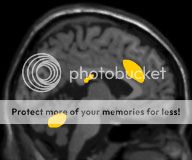
While the heart may hold the key to love, the brain helps unlock it. In fact, modern neuroscience and magnetic resonance imaging (MRI) scanning has helped answer a lot of questions about lasting romances, what being in love looks like, and whether there is a neurological difference between how we feel about casual sex, platonic friends, and those we’re in love with. In a critical fMRI study the brains of people who were newly in love were scanned while they looked at photographs, some of their friends and some of their lovers. Pictures of lovers activated specific areas of the brain (pictured on the left) that were not active when looking at pictures of good friends or thinking about sexual arousal, suggesting that romantic love and mate attachment aren’t so much of an emotion or state of mind as they are a deeply rooted drive akin to hunger, thirst and sex. Furthermore, a 2009 Florida State study showed that people in a committed relationship and are thinking of their partner subconsciously avert their eyes from an attractive member of the opposite sex. The most heartwarming part of all? It lasts. fMRI imaging of 10 women and 7 men still claiming to be madly in love with their partners after an average of 21 years of marriage showed equal brain activation to the earlier studies of nascent romances.
In case you’re blinded by all this science, remember this central fact about love: it’s good for you! The art of kissing has been shown to promote many health benefits, including stress relief, prevention of tooth and gum decay, a muscle workout, anti-aging effects, and therapeutic healing. If everything goes well with the kissing, it could lead to an even more healthy activity… sex! Not only does sex improve your sense of smell, boost fitness and weight loss, mitigate depression and pain, but it also strengthens the immune system, prevents heart disease and prostate cancer. In fact, “I have a headache” may be a specious excuse to avoid a little lovin’ since sex has been shown to cure migraines (and cause them, so be careful!). All of these facts and more, along with everything you ever wanted to know about sex, were collected and studied by neuroscientist Barry Komisaruk, endocrinologist Carlos Beyer-Flores and sexuality researcher Beverly Whipple in The Science of Orgasm. Add it to your shopping list today! The above activities may find you marching down the aisle, which especially for men is a very, very good thing. Studies show that married men not only live longer and healthier lives but also made more money and were more successful professionally (terrific New York Times article here).
Love in the Age of Algebra
While science can pinpoint the biological markers of love, can it act as a prognosticator of who will get together, and more importantly, stay together? Mathematicians and statisticians are sure trying! One of the foremost world-renowned experts on relationship and marriage modeling is University of Washington psychology professor John Gottman, head of The Gottman Institute and author of Why Marriages Succeed or Fail. Dr. Gottman uses complex mathematical modeling and microexpression analysis to predict with 90% accuracy which newlyweds will remain married four to six years later, and with 83% accuracy seven to nine years thereafter. In this terrific profile of Gottman’s “love lab,” we see that his methodology includes use of a facial action coding system (FACS) to analyze videotapes for minute signs of negative expressions such as contempt or disgust during simple conversations or stories. Take a look at this brief, fascinating video of how it all works:
Naturally, the next evolutionary step has been to cash in on this science in the online dating game, where successful matchmaking hinges on predicting which couples will be ideally suited to each other on paper. Dr. Helen Fisher has used her expertise in the chemicals of love to match couples through their brain chemistry personality profiles on Chemistry.com. eHarmony has an in-house research psychologist, Gian Gonzaga, an ardent proponent of personality assessment and skeptic of opposites attracting. Finally, the increasingly popular Match.com boasts of a radically advanced new personality profile called “match insights,” devised by none other than Dr. Fisher and medical doctor Jason Stockwood. If you don’t believe in the power of the soft sciences, you can take your matchmaking to a molecular level, with several new companies claiming to connect couples based on DNA fingerprints and the biological instinct to breed with people whose immune system differs significantly from ours for genetic stability. ScientificMatch.com promises that its pricey, patent-pending technology “uses your DNA to find others with a natural odor you’ll love, with whom you’d have healthier children, a more satisfying sex life and more,” while GenePartner.com tests couples based on only one group of genes: human leukocyte antigens (HLAs), which play an essential role in immune function. The accuracy of all of these sites? Mixed. Despite the problem of rampant lying in internet dating profiles and dating in volume to pinpoint the right match, some research has shown remarkably high success (as high as 94%) in e-partners that had met in person.

What’s Science Got To Do With It?
In the shadow of such vast technological advancement and deduction of romance to the binary and biological, readers of this blog might imagine that its scientist editor might condemn decidedly empirical views of love. They would be wrong. For while numbers and test tubes and brain scanning machines can help us describe love’s physiological and psychological nimbus, its esoteric nucleus will forever be elusive. And thank heavens for that! There exists no mathematical formula (other than perhaps chaos theory) that can explain the idea of two people, diametrical as day and night, falling in love and somehow making it work. No MRI is equipped with a magnet strong enough to properly quantify the utter heartbreak of those that don’t. There is not a statistical deviation alive that could categorize my grandparents’ unlikely 55-year marriage, a marriage that survived World War II, Communism, a miscarriage, the death of a child, poverty, imprisonment in a political gulag, and yes, even a torrid affair. After my grandfather died, my grandmother eked out another feeble few years before succumbing to what else but a broken heart. It is within that enigma that generations of poets, scribes, musicians, screenwriters, and artists dating all the way back to humanity’s cultural dawning—the Stone Age—have never exhausted of material, and they never will.
Love exists outside of all the things that science is—the ordered, the examined, the sterile, the safe, and the rational. It is inherently irrational, messy, disordered and frustrating. Science and technology forever aim to eliminate mistakes, imperfection and any obstacles to precision, which in matters of the heart would be a downright shame. Love is not about impersonal personality surveys, neurotransmitter cascades or the incessant beeping of laboratory machines measuring its output. It’s about magic, mystery, voodoo and charm. It’s about experimenting, floating off the ground, being scared out of your mind, laughing uncontrollably and inexplicably, flowers, bad dates, good dates, tubs of ice cream and chocolate with your closest friends, picking yourself up and starting the whole process all over again. It’s not about guarantees or prognostications, not even by smart University of Washington psychologists. It’s about having no clue what you’re doing, figuring it out as you go along, deviating from formulas, books, and everything scientists have ever told you, taking a chance on the stranger across a crowded room, and the moon hitting your eye like a big-a pizza pie.
Now that’s amore!
Hope everyone had a great Valentine’s Day.
~*ScriptPhD*~
*****************
ScriptPhD.com covers science and technology in entertainment, media and advertising. Hire our consulting company for creative content development.
Follow us on Twitter and our Facebook fan page. Subscribe to free email notifications of new posts on our home page.
]]>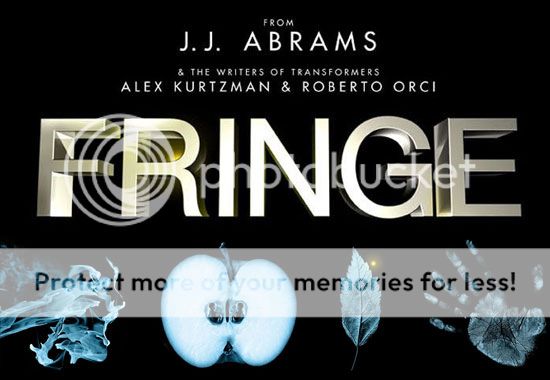
ScriptPhD.com’s coverage of Comic-Con 2009 included an interesting panel entitled Mad Science: The Science Behind Science Fiction, which consisted of a panel of top science fiction shows Eureka, Battlestar Galactica, Eureka, Caprica and Fringe. There, we met Dr. Ricardo Gil da Costa, a neurobiologist who is one of the official science advisors to the writers of Fringe. We recently had the opportunity to visit Dr. Gil da Costa on location in his laboratory at the Salk Institute for Biological Studies in San Diego, CA. We sat down to talk about his science, what it’s like to be “on-call” for one of the biggest hit shows on television, how the writers use his knowledge and integrate it into the show, and more broadly, how creatives in the entertainment industry can best utilize the skills of research scientists as they integrate more sophisticated material into their scripts. Watch the full video below.
Behind the Science of Fringe, With ScriptPhD.com and Dr. Ricardo Gil da Costa
~*ScriptPhD*~
*****************
ScriptPhD.com covers science and technology in entertainment, media and advertising. Hire us for creative content development.
Subscribe to free email notifications of new posts on our home page.
]]>
Music. We all know what it sounds like when we hear it. It has the ability to create powerful emotions, or bring back memories from the distant past in our lives. We may use it when we exercise, study for exams, read, or for traveling form point A to point B. But what is music? Is it unique to human beings? How do we interpret music when we hear it? Are the emotions created by music universal, irrespective of the listener’s culture and country of origin? Can music teach us anything about how the human brain functions? These interesting questions and more are explored in the fascinating documentary The Music Instinct: Science and Song, a PBS production that was recently honored with the top prize at the prestigious annual Pariscience International Science Film Festival. ScriptPhD.com’s newest regular contributor NeuroScribe provides his review and discussion under the “continue reading” jump.
REVIEW: The Music Instinct: Science and Song
ScriptPhD.com Grade: A+
In his stirring and enormously popular 2007 opus Musicophilia: Tales of Music and the Brain, neurology professor Oliver Sacks examines the extreme effects of music on the human brain and how lives can be utterly transformed by the simplest of harmonies. These very themes are the foundation of The Music Instinct, hosted by Dr. Daniel Levitin, a neuroscientist and author of This Is Your Brain on Music: The Science of a Human Obsession, and 10-time Grammy award winning musician and vocalist Bobby McFerrin. Together they bridge the gap between listening to and creating music with neuroscientists seeking a greater understanding of how the brain works.
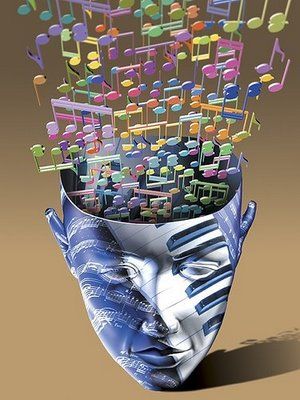
Dr. Levitin states in the program, “The brain is teaching us about music and music is teaching us about the brain.” Well, how does this happen? Music is after all information which the brain processes. How the brain processes and stores information is a huge area of basic neuroscience study. These studies are typically funded by the National Institutes of Health in Washington, DC. The results of these studies lead to improved treatment of patients suffering from a variety of human diseases. The incredible impact music has on people is remarkable. For example, the program mentions how music is used in hospitals to steady the breathing of premature babies, and the heart rate of cardiac patients. A three-year study from 2002-2005 on music therapy for infants was named by The Council for the Humanities, Arts and Social Sciences as one of 12 exemplar studies for the year 2006. For more videos and information on the power of music therapy, please visit the official American Music Therapy Association website.
Is music built into who we are as people? Some scientists do not think so, yet many others believe it is. What is music and how do we hear it? A basic definition would be that music is the vibration of molecules in the air which have a certain pitch and rhythm. These vibrations enter the ear and cause your ear drum to vibrate. As your ear drum vibrates, this causes the movement of three small bones called ossicles. These bones transmit the vibration to the nerves in the inner ear. It is here where the vibrations (initially music) are transmitted into nerve signals sent directly to your brain to be processed. In a nutshell, that is how we hear. While this is well known information, what isn’t well known is how and why music generates emotional changes in the brain after it has been physically interpreted. Scientific research is attempting to answer these and many other questions.
Scientists know a developing fetus begins hearing at seventeen to nineteen weeks of development. Can the fetus hear music? Does the fetus respond to music? The program shows a pregnant mother listening to music while the fetus’s heart rate is monitored. Researchers found that when music was played, the fetus’s heart rate increased. The heart rate of a person is one indicator of what is known as the “startle response”. The startle response is that “fight or flight” instinctual reflex the brain carries out to ensure an animal’s survival. This response is generated from very primitive areas of the brain. They also implanted a miniature hydrophone inside the mother’s womb to see if there was any natural sound in the womb. In addition, the hydrophone recorded what the music would sound like to the fetus. An audio recording from inside the mother transmits the pulsing of blood from the uterine artery. One can also hear the music as well fairly clearly as the infant would hear it—like a muffled sound as if you were underwater in the ocean or a pool. Many scientists think we are “wired” and listening to rhythm, the essential difference between sound and music, even before we are born.
The program also goes beyond just examining the cellular and physiological responses to music to discuss the differences and universal similarities of people’s emotional responses to music. In an interesting study looking at the emotions generated by music, participants listened to different types of classical music while various biological indicators of emotion changes were recorded. The neuroscientists observed when people listened to lighthearted sounds, the body was at a resting state. However, when they heard deep sounds say from a piano, heart rates increased and people began to sweat, indicators of stress. A very interesting recent study asked the question: Are there things about music which go beyond culture. Read about it here. A group of scientists, led by Dr. Thomas Fritz, traveled to the country of Cameroon in Africa. They visited a very remote group of people, the Malfa, living in the mountains. These people have never been exposed to Western music. In fact, in their language they don’t even have a word for music, yet they make musical instruments and play them daily. They were asked to listen to different pieces of Western classical music, and then point to one of 3 faces in a book. Each face represented a different emotion: happy, sad, or scary. The participants knew which emotion went to which face for the experiment. The scientists found despite these people never having heard Western music, they were able to identify music as happy, sad or scary, just as Western people could. Their conclusion was the emotional content of music is inherent in music itself, and is not solely the result of cultural imprinting. This study tells us there are some things about music and emotion which may indeed be universal, and not bounded by country or culture.
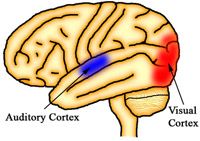
Nevertheless, our responses to music are not always universal. In Western cultures, a certain type of pitch is typically identified as being “sad”, yet the same pitch in a different culture is identified as being “happy”. This tells us there are some outside factors, such as culture, which help shape a person’s emotional response to music. Indeed, some of this behavior is in fact learned. Did you ever notice when you hear some music, without even thinking, you start moving your head, or tapping your feet? Why do we do that? Well, the answers aren’t entirely known. However, it is no longer believed the brain has a central “music region”. The listening and processing of music occurs throughout many regions of the brain. In fact, music occupies more regions of the brain than language does! Despite this, the auditory cortex of the brain (pictured at right) has been shown to have strong ties to the motor regions of the brain. People with neurological disorders (strokes, Parkinson’s disease, etc.) have often been found to have improved neurological function after receiving music therapy.
One final interesting scientific argument discussed in this program is the origin of music, specifically what evolved first: music or language? Many scientists believe it is language which developed first, but The Music Instinct provides compelling evidence that suggests perhaps it is music which evolved first. A 2001 Scientific American article suggests that music not only predates language, but may be more ancient than the human race. For those who have watched the news, or traveled to foreign countries, you can see time after time how all types of music, in a different language than the listeners’ native language, influences the emotional behavior of those that are listening.
Music is indeed a universal form of communication which may supersede language. If so, maybe the next time I encounter a foreigner, instead of trying to say “Hello” I will jam out some Beatles tunes!
Trailer:
The Music Instinct: Science and Song was released on DVD November 4.
NeuroScribe obtained a B.S. in Biology, and a Ph.D. in Cell Biology with a strong emphasis in Neuroscience. When he’s not busy freelancing for ScriptPhD.com he is out in the field perfecting his photography, reading science policy, and throwing some Frisbee.
~*NeuroScribe*~
*****************
ScriptPhD.com covers science and technology in entertainment, media and pop culture. Follow us on Twitter and our Facebook fan page. Subscribe to free email notifications of new posts on our home page.
